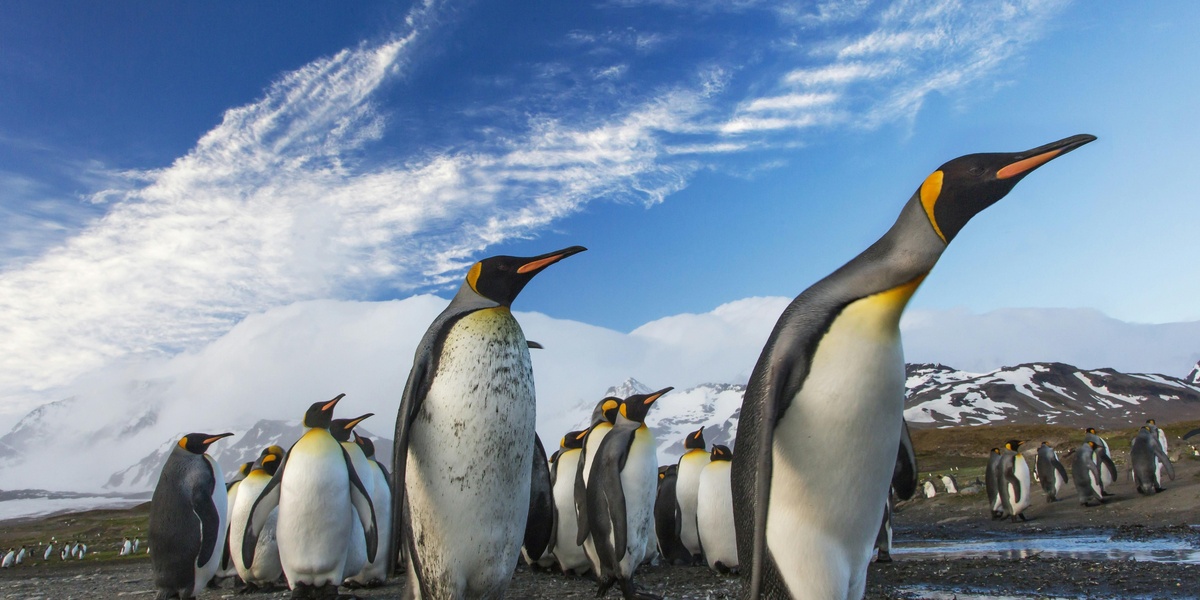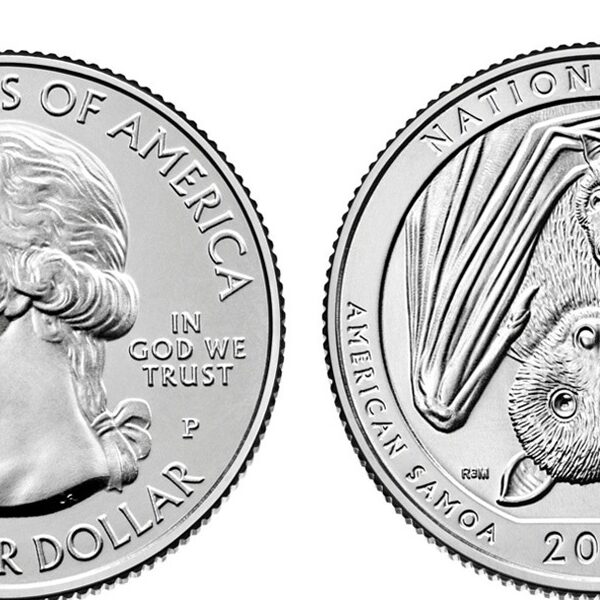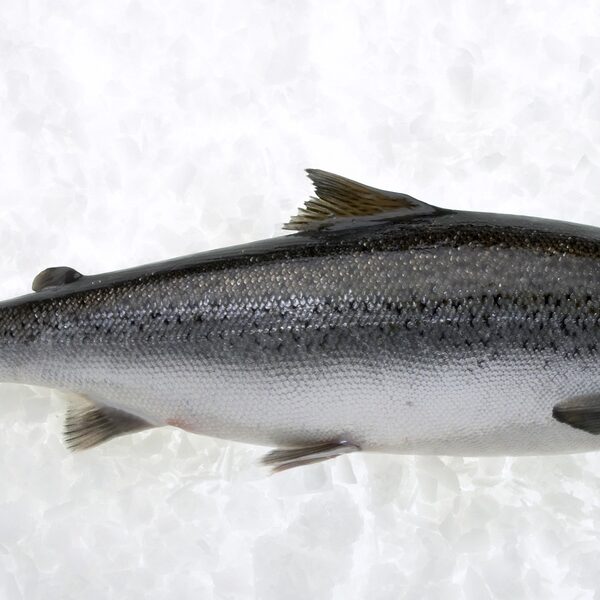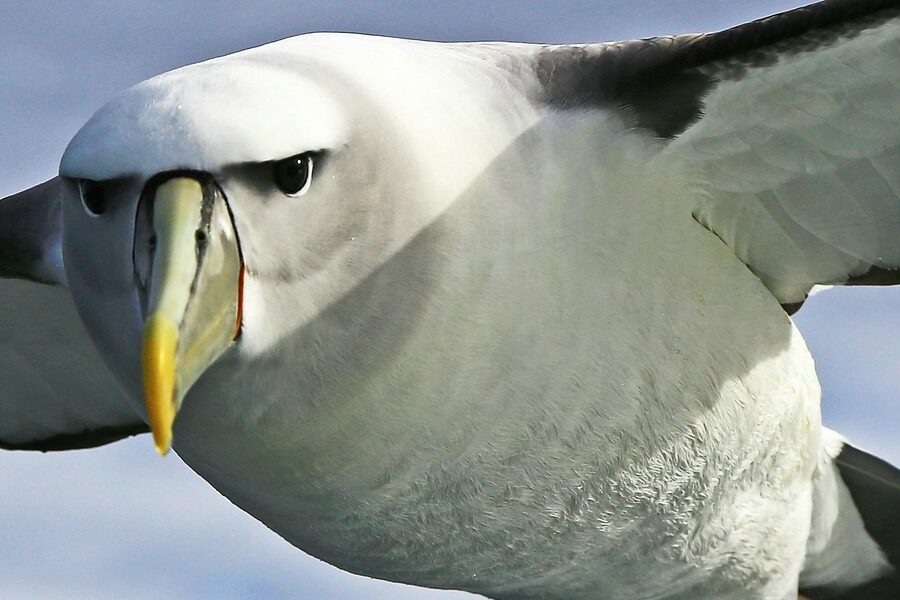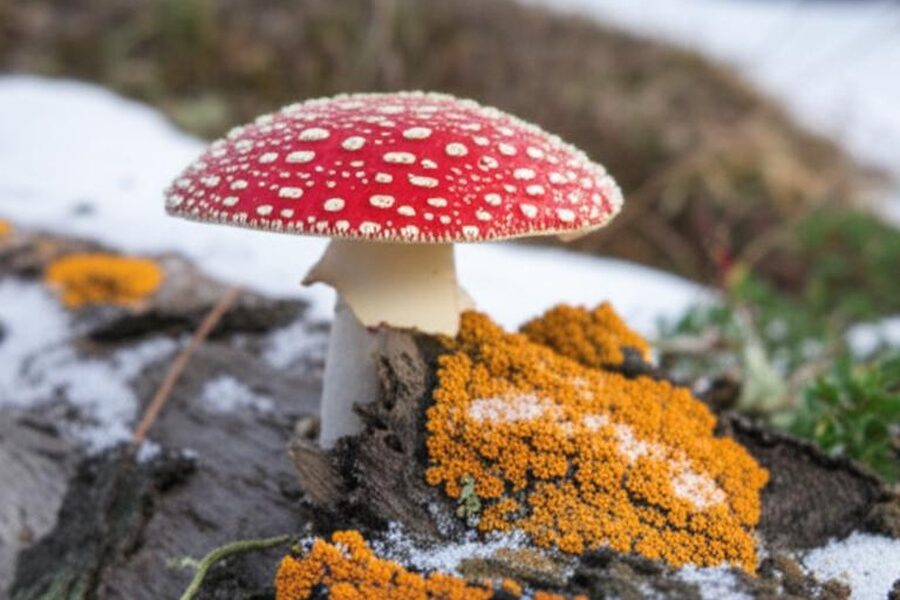The polar regions host birds specially adapted to cold, wind and long seasonal changes. Along ice edges, tundra and coastal waters you’ll find species that time breeding, feeding and migration to daylight and sea-ice patterns.
There are 64 polar birds, ranging from Adélie Penguin to Yellow-billed Loon. For each species I list: Scientific name,Region,Size (cm); you’ll find below the full list and those details to help compare ranges and body size.
Which areas count as “polar” in this list?
This list covers Arctic and Antarctic zones plus adjacent subpolar waters and islands where these species regularly occur; the Region column indicates the primary area(s) and whether a species is resident, breeding, or a seasonal visitor.
How should I use the Scientific name,Region,Size (cm) columns when identifying a bird?
Start with Region to narrow likely candidates by location, use Size (cm) to eliminate species outside the expected length range, and confirm with the Scientific name in a field guide or database for precise identification.
Polar Birds
| Name | Scientific name | Region | Size (cm) |
|---|---|---|---|
| Emperor Penguin | Aptenodytes forsteri | Antarctic. Breeds on sea ice around the continent. | 115 |
| Snowy Owl | Bubo scandiacus | Arctic. Circumpolar tundra, nomadic based on prey availability. | 60 |
| Arctic Tern | Sterna paradisaea | Arctic (breeds) / Antarctic (winters). Pole-to-pole migrant. | 36 |
| King Penguin | Aptenodytes patagonicus | Subantarctic. Breeds on islands like South Georgia and Macquarie. | 90 |
| Rock Ptarmigan | Lagopus muta | Arctic. Circumpolar, lives on rocky alpine and arctic tundra. | 35 |
| Adélie Penguin | Pygoscelis adeliae | Antarctic. Found along the entire Antarctic coast. | 70 |
| Gyrfalcon | Falco rusticolus | Arctic. Circumpolar, breeds on cliffs and rocky outcrops. | 55 |
| Snow Petrel | Pagodroma nivea | Antarctic. Breeds on cliffs and mountainsides around Antarctica. | 35 |
| Atlantic Puffin | Fratercula arctica | Arctic / North Atlantic. Breeds in colonies on coastal cliffs. | 30 |
| South Polar Skua | Stercorarius maccormicki | Antarctic (breeds) / Oceans worldwide (winters). | 53 |
| Snow Bunting | Plectrophenax nivalis | Arctic. Circumpolar, breeds in rocky tundra. | 16 |
| Chinstrap Penguin | Pygoscelis antarcticus | Antarctic / Subantarctic. Breeds on the Antarctic Peninsula and islands. | 72 |
| Ivory Gull | Pagophila eburnea | Arctic. Breeds on remote sea cliffs, associated with pack ice. | 42 |
| Thick-billed Murre | Uria lomvia | Arctic. Circumpolar, nests on sheer sea cliffs. | 43 |
| Long-tailed Duck | Clangula hyemalis | Arctic. Circumpolar, breeds on tundra pools. | 45 |
| Gentoo Penguin | Pygoscelis papua | Antarctic / Subantarctic. Widespread on islands and the peninsula. | 80 |
| Snow Goose | Anser caerulescens | Arctic. Breeds in tundra colonies in North America and Siberia. | 75 |
| Wandering Albatross | Diomedea exulans | Subantarctic. Breeds on islands like South Georgia. | 120 |
| Common Eider | Somateria mollissima | Arctic / Subarctic. Circumpolar, coastal sea duck. | 60 |
| Antarctic Petrel | Thalassoica antarctica | Antarctic. Breeds on the continent and nearby islands. | 43 |
| Red-throated Loon | Gavia stellata | Arctic. Circumpolar, breeds on small tundra ponds. | 60 |
| Macaroni Penguin | Eudyptes chrysolophus | Subantarctic / Antarctic Peninsula. | 70 |
| Pomarine Jaeger | Stercorarius pomarinus | Arctic (breeds) / Tropical oceans (winters). | 50 |
| King Eider | Somateria spectabilis | Arctic. Circumpolar, breeds on coastal tundra. | 58 |
| Antarctic Shag | Leucocarbo bransfieldensis | Antarctic Peninsula and South Shetland Islands. | 75 |
| Sabine’s Gull | Xema sabini | Arctic (breeds) / Oceans (winters). | 33 |
| Willow Ptarmigan | Lagopus lagopus | Arctic / Subarctic. Circumpolar, in willow scrub and tundra. | 38 |
| Dovekie | Alle alle | Arctic. Breeds in the high Arctic of the North Atlantic. | 20 |
| Cape Petrel | Daption capense | Antarctic / Subantarctic. | 39 |
| Red Phalarope | Phalaropus fulicarius | Arctic (breeds) / Oceans (winters). | 21 |
| Black-browed Albatross | Thalassarche melanophris | Subantarctic. Nests on islands like the Falklands and South Georgia. | 85 |
| Lapland Longspur | Calcarius lapponicus | Arctic. Circumpolar, breeds in moist tundra. | 16 |
| Southern Giant Petrel | Macronectes giganteus | Antarctic / Subantarctic. | 90 |
| Rough-legged Hawk | Buteo lagopus | Arctic. Circumpolar, breeds on tundra cliffs. | 55 |
| Antarctic Tern | Sterna vittata | Antarctic / Subantarctic. Breeds on coastal islands. | 38 |
| Hoary Redpoll | Acanthis hornemanni | Arctic. Circumpolar, breeds in scrubby tundra. | 13 |
| Brown Skua | Stercorarius antarcticus | Subantarctic. Breeds on islands around the Antarctic convergence. | 63 |
| Yellow-billed Loon | Gavia adamsii | Arctic. Breeds on tundra lakes in Siberia and North America. | 85 |
| Wilson’s Storm Petrel | Oceanites oceanicus | Antarctic / Subantarctic (breeds). Migrates to Northern Hemisphere. | 17 |
| Horned Puffin | Fratercula corniculata | Arctic. Breeds in North Pacific and Arctic Ocean. | 38 |
| South Georgia Pipit | Anthus antarcticus | Subantarctic. Endemic to the island of South Georgia. | 17 |
| Black Guillemot | Cepphus grylle | Arctic. Circumpolar, nests in rocky shores and crevices. | 33 |
| Glaucous Gull | Larus hyperboreus | Arctic. Circumpolar, breeds on coasts and cliffs. | 67 |
| Parasitic Jaeger | Stercorarius parasiticus | Arctic (breeds) / Oceans worldwide (winters). | 46 |
| Black-faced Sheathbill | Chionis minor | Subantarctic. Breeds on islands in the southern Indian Ocean. | 39 |
| Common Murre | Uria aalge | Arctic / Subarctic. Circumpolar, nests on sea cliffs. | 42 |
| Brant Goose | Branta bernicla | Arctic. Circumpolar, breeds on coastal tundra. | 60 |
| Ruddy Turnstone | Arenaria interpres | Arctic (breeds) / Coastlines worldwide (winters). | 23 |
| Sanderling | Calidris alba | Arctic (breeds) / Sandy beaches worldwide (winters). | 20 |
| Kelp Gull | Larus dominicanus | Antarctic / Subantarctic / Southern Hemisphere coasts. | 60 |
| Razorbill | Alca torda | Arctic / North Atlantic. Breeds on coastal cliffs. | 40 |
| Light-mantled Albatross | Phoebetria palpebrata | Antarctic / Subantarctic. Circumpolar on southern oceans. | 85 |
| Steller’s Eider | Polysticta stelleri | Arctic. Breeds on tundra in Siberia and Alaska. | 45 |
| Grey-headed Albatross | Thalassarche chrysostoma | Subantarctic. Breeds on a few remote island groups. | 81 |
| Northern Fulmar | Fulmarus glacialis | Arctic / North Atlantic and Pacific. Breeds on sea cliffs. | 48 |
| Long-tailed Jaeger | Stercorarius longicaudus | Arctic (breeds) / Oceans worldwide (winters). | 53 |
| Spectacled Eider | Somateria fischeri | Arctic. Breeds on coastal tundra in Alaska and Siberia. | 55 |
| South Georgia Shag | Leucocarbo georgianus | Subantarctic. Endemic to South Georgia and nearby islands. | 72 |
| Northern Wheatear | Oenanthe oenanthe | Arctic / Subarctic (breeds). Migrates to Africa. | 15 |
| Tufted Puffin | Fratercula cirrhata | Arctic. North Pacific Ocean, from Alaska to Japan. | 38 |
| Ross’s Gull | Rhodostethia rosea | Arctic. Breeds in a few locations in high Arctic Siberia. | 31 |
| South Georgia Pintail | Anas georgica georgica | Subantarctic. Endemic to South Georgia. | 50 |
| Common Redpoll | Acanthis flammea | Arctic / Subarctic. Circumpolar, in birch and willow scrub. | 13 |
| Red-necked Phalarope | Phalaropus lobatus | Arctic (breeds) / Oceans (winters). | 18 |
Images and Descriptions
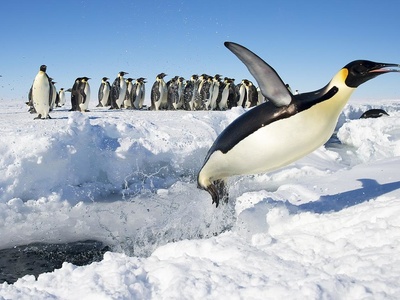
Emperor Penguin
The largest penguin, famous for its incredible breeding cycle during the harsh Antarctic winter. Adults have distinctive golden-yellow ear patches. They huddle together in huge groups to survive the extreme cold while incubating their single egg on their feet.
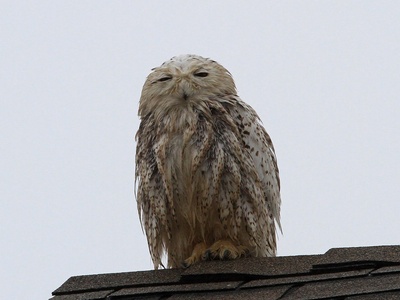
Snowy Owl
A powerful, iconic white owl of the open tundra. Adult males can be almost pure white, while females have dark barring. They are formidable hunters, preying primarily on lemmings, and are known for their piercing yellow eyes.
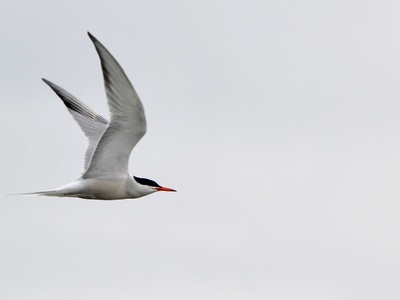
Arctic Tern
Holder of the longest migration record, flying from the Arctic to the Antarctic and back each year. A slender, graceful seabird with a black cap, blood-red bill, and deeply forked tail. It fiercely defends its nesting colonies.
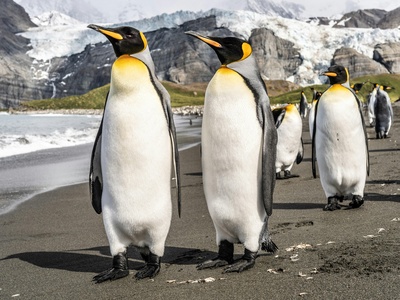
King Penguin
The second-largest penguin, easily recognized by the bright golden-orange teardrop patch on its neck. Forms enormous, noisy breeding colonies. Their brown, fluffy chicks were once mistaken for a separate species called the “woolly penguin.”
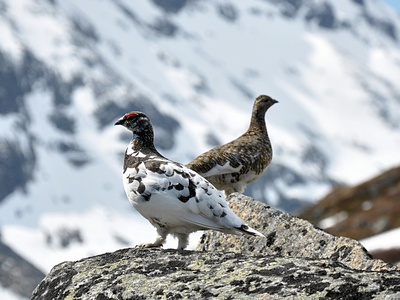
Rock Ptarmigan
A master of camouflage, changing its feathers from mottled brown in summer to pure white in winter. Only its black eye-line and tail feathers remain. This hardy grouse survives the winter by feeding on willow buds and digging snow burrows.
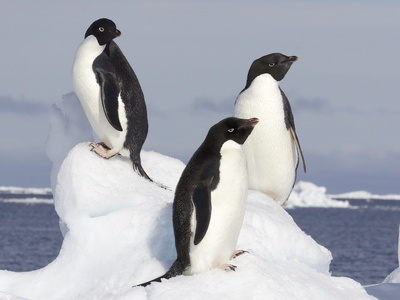
Adélie Penguin
A classic “tuxedo” penguin with a simple black head and a distinct white ring around its eye. Known for its feisty, curious nature. They build their nests from small stones, which are often stolen from their neighbours.
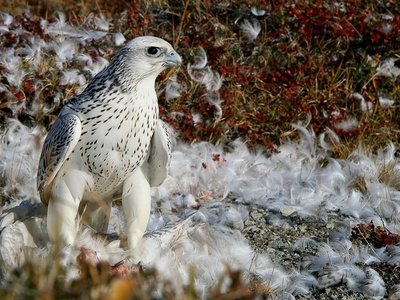
Gyrfalcon
The world’s largest falcon, a powerful predator of the Arctic. Its plumage varies from pure white to dark grey. It preys on birds like ptarmigan and waterfowl, often hunting in high-speed pursuits across the tundra.
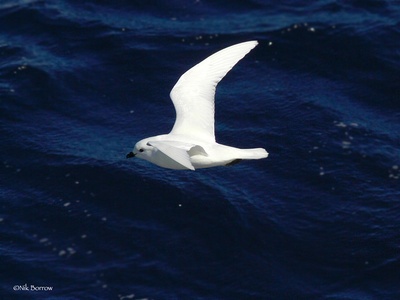
Snow Petrel
An ethereal, pure white seabird that is one of the few species to breed exclusively in Antarctica, often far inland. They are true Antarctic specialists, nesting in rock crevices to escape predators like skuas.
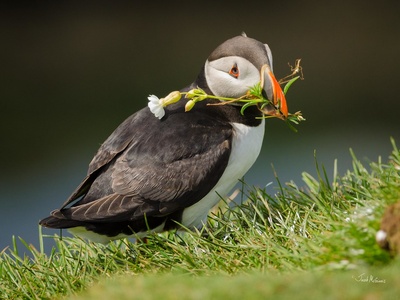
Atlantic Puffin
An unmistakable seabird with a large, brightly coloured triangular bill, which is shed after the breeding season. Nicknamed the “sea parrot,” it can carry multiple small fish, like sandeels, back to its nest burrow crosswise in its bill.
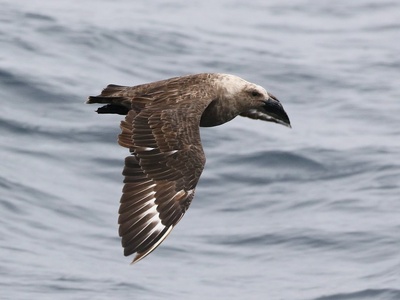
South Polar Skua
A large, powerful, and aggressive seabird often called the “pirate of the Antarctic.” It has a dark brown body and distinctive white flashes on its wings. It preys on penguin eggs and chicks and often steals food from other birds.
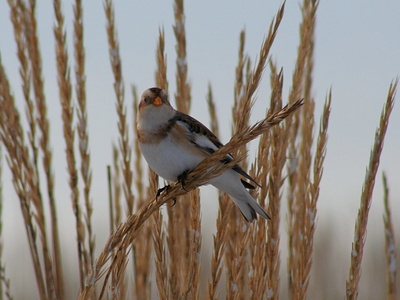
Snow Bunting
A small, hardy songbird often called the “snowflake.” In summer, breeding males are a striking black and white. They are one of the first migrants to return to the high Arctic, with a tinkling song that signals the start of spring.
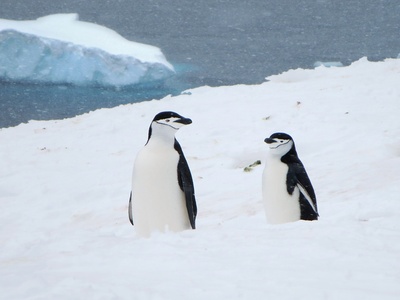
Chinstrap Penguin
Easily identified by the narrow black band that runs under its chin, looking like a helmet strap. They are one of the most abundant penguins and form massive, densely packed colonies on rocky, ice-free slopes.
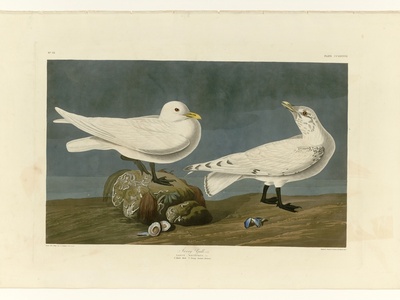
Ivory Gull
A stunning, pure-white gull of the high Arctic. It is a true ice specialist, often found scavenging on seal or polar bear kills on the sea ice. Its pristine appearance and remote habitat make it a prized sighting for birders.
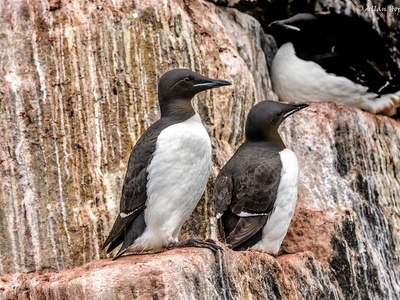
Thick-billed Murre
A black-and-white seabird resembling a “flying penguin.” It nests in enormous, noisy colonies on narrow cliff ledges. It can dive to incredible depths over 100 meters to catch fish and crustaceans, using its wings to “fly” underwater.
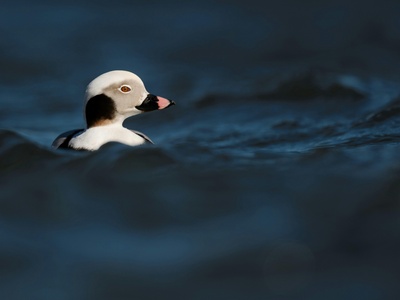
Long-tailed Duck
A striking sea duck with different plumages for winter and summer. Breeding males are boldly patterned in black, white, and grey, and have extremely long central tail feathers. Their yodeling calls are a characteristic sound of the Arctic spring.
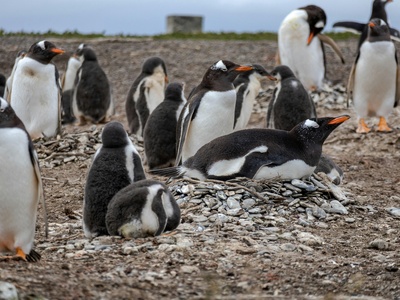
Gentoo Penguin
Identified by the white stripe extending like a bonnet across the top of its head and a bright orange-red bill. Gentoos are the fastest swimming penguins, reaching speeds of up to 36 km/h (22 mph) underwater.
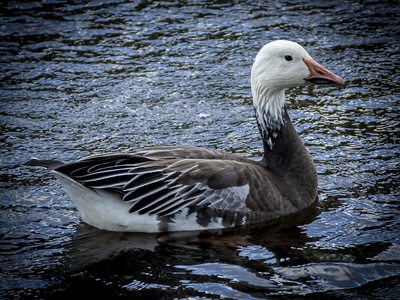
Snow Goose
A medium-sized goose that occurs in two colour morphs: pure white (snow) and grey-brown (blue). They form huge, noisy flocks that can seem to blanket the tundra during breeding and migration, feeding on roots and grasses.
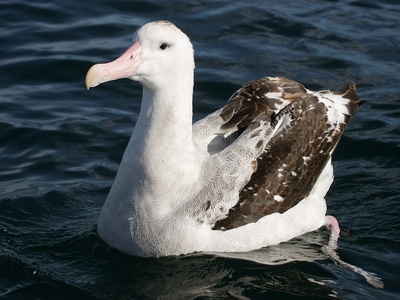
Wandering Albatross
Possessing the largest wingspan of any living bird, up to 3.5 meters. This magnificent seabird spends most of its life soaring over the Southern Ocean, travelling vast distances. It can live for over 50 years.
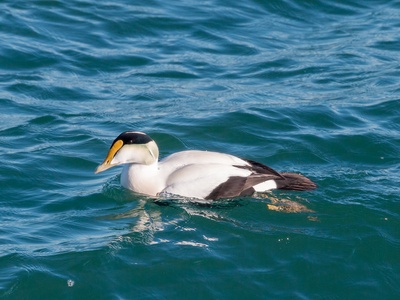
Common Eider
A large, heavy-bodied sea duck. Males are a distinctive black and white with a pale green nape. Females pluck soft down from their breast to line their nests; this down is sustainably harvested to make eiderdown quilts.
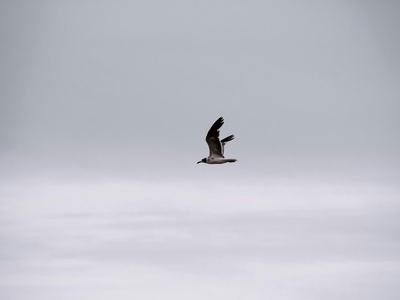
Antarctic Petrel
A handsome brown-and-white petrel with a neat, capped appearance. It forages for krill and fish in the icy waters of the pack ice zone, often forming massive flocks that rest on icebergs between feeding sessions.
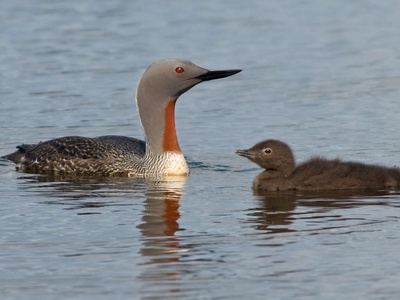
Red-throated Loon
The smallest and most slender of the loons (divers). In breeding plumage, it has a grey head and a distinctive triangular red throat patch. Its call is a strange, wailing sound, and it requires a shorter “runway” to take off than other loons.
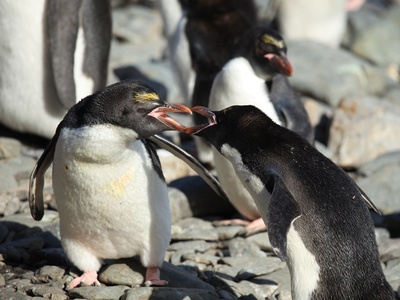
Macaroni Penguin
A species of crested penguin known for its flamboyant yellow-orange crest feathers, which look like macaroni. It is the most numerous penguin species, though its populations have seen declines in some areas. They are noisy and aggressive in their colonies.
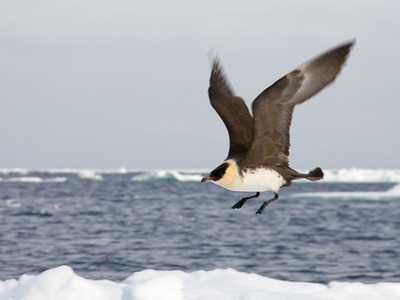
Pomarine Jaeger
The largest of the three jaegers (skuas), a powerful seabird known for kleptoparasitism—aggressively chasing other birds to steal their food. Breeding adults have unique, blunt, twisted central tail feathers.
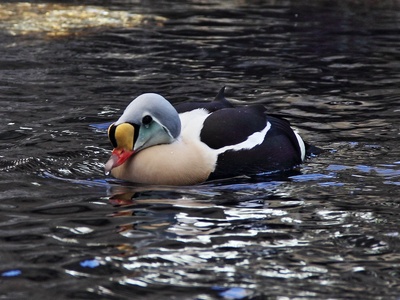
King Eider
Arguably the most spectacular of the sea ducks. The breeding male has a complex pattern of black, white, and pastel colours, with a huge, bright orange frontal shield on its bill that gives it a regal appearance.
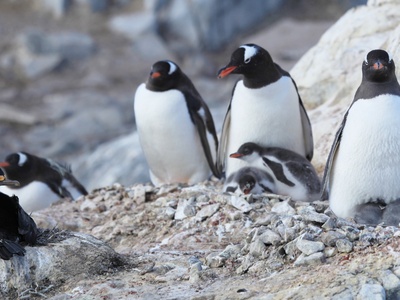
Antarctic Shag
A black-and-white cormorant with a distinctive white wing bar and bright blue skin around the eye. It is an expert diver, feeding on fish near the coast. It builds its nest from seaweed and mud on rocky cliffs.
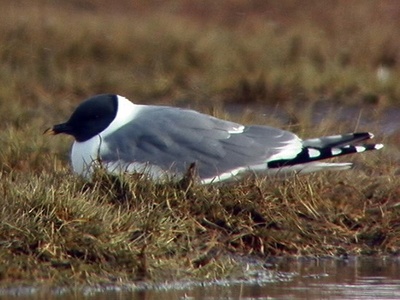
Sabine’s Gull
A small, elegant gull with a striking wing pattern of three triangles: white, black, and grey. It also has a dark grey hood and a black bill tipped with yellow during the breeding season. It forages by picking food from the sea surface.
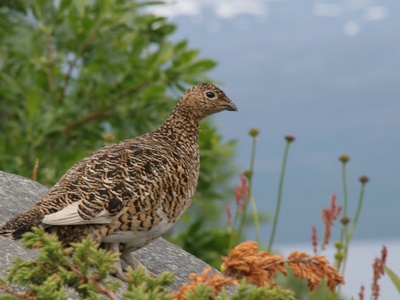
Willow Ptarmigan
Similar to the Rock Ptarmigan but slightly larger and prefers lower, shrubbier habitats. It also turns white in winter but retains a black tail. It is the state bird of Alaska. Its call is a comical, guttural “go-back, go-back.”
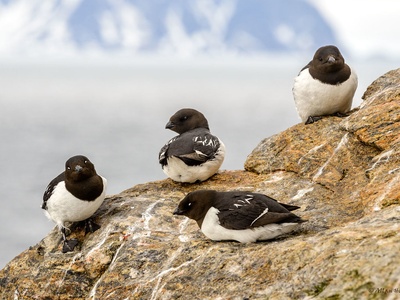
Dovekie
A tiny, chubby auk, about the size of a starling. It is incredibly abundant, with some colonies numbering in the millions. They nest in rock crevices on talus slopes and feed primarily on tiny crustaceans called copepods.
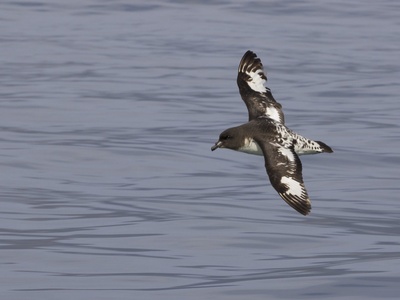
Cape Petrel
An attractive, medium-sized petrel with a distinct checkered black-and-white pattern on its back and wings, earning it the nickname “pintado petrel.” It often follows ships, feeding on krill and offal from the water’s surface.
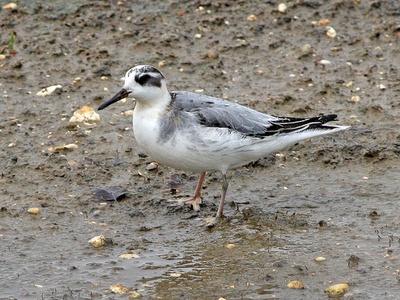
Red Phalarope
A small sandpiper with a unique feeding behaviour of spinning in circles on the water to stir up small invertebrates. In a reversal of typical bird roles, the female is more brightly coloured and the male incubates the eggs.
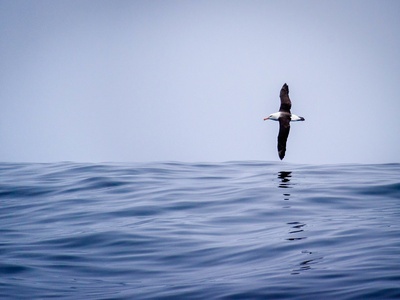
Black-browed Albatross
A medium-sized albatross with a distinct dark line through its eye, giving it a “scowling” look. It is one of the most common albatrosses and is an expert glider, able to travel huge distances with minimal effort.
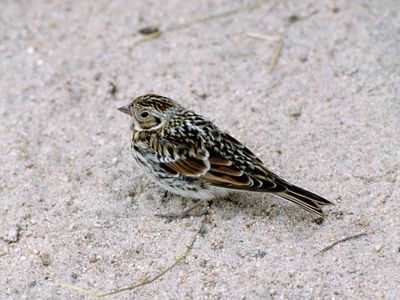
Lapland Longspur
A sparrow-like bird of the Arctic tundra. The breeding male is handsome, with a black face and throat, chestnut nape, and streaky brown back. Its song is a short, sweet, jangling warble, often delivered in a flight display.
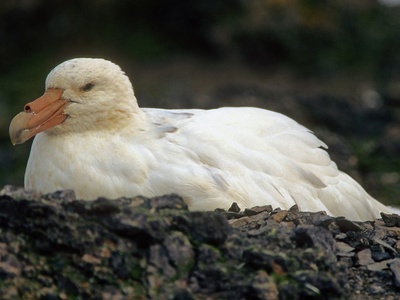
Southern Giant Petrel
A huge, powerfully built seabird with a massive pale bill. It comes in two colour morphs: dark and a rarer all-white. It is both a predator and a scavenger, feeding on penguin and seal carrion, as well as preying on other birds.
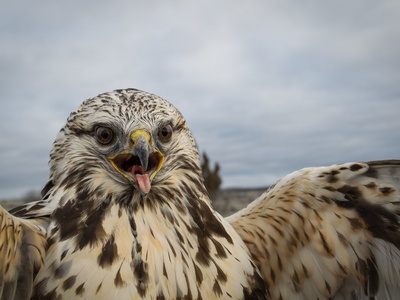
Rough-legged Hawk
A large hawk, or buzzard, named for the feathers that extend all the way down its legs to its toes, an adaptation for cold climates. It often hovers in place while hunting for lemmings and voles over the open tundra.
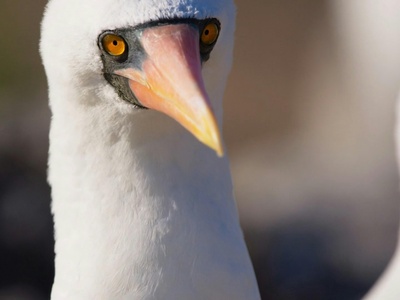
Antarctic Tern
A graceful seabird very similar to the Arctic Tern but with a slightly larger bill and a more limited, southerly range. It breeds on ice-free ground and feeds on small fish and krill, which it catches by plunge-diving.
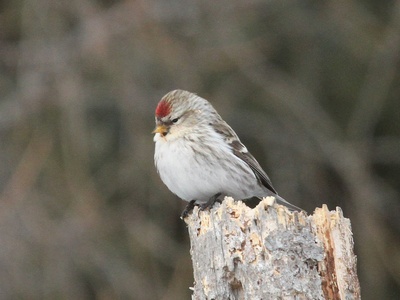
Hoary Redpoll
A small, “frosty” finch of the high Arctic. It is paler and whiter overall than its close relative, the Common Redpoll, with a smaller bill and an unstreaked white rump. It feeds on seeds of birch and alder.
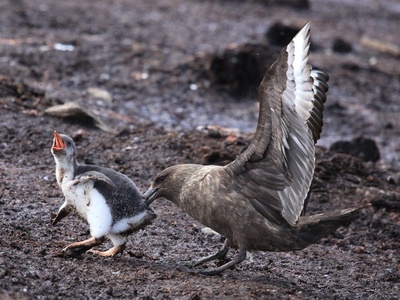
Brown Skua
A large, bulky, and dark brown seabird, very similar to the South Polar Skua, with which it sometimes hybridizes. It is a top predator and scavenger in its island ecosystem, preying on petrels, penguins, and introduced rabbits.
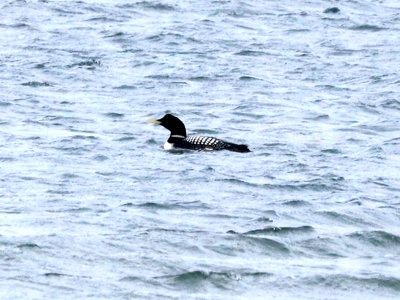
Yellow-billed Loon
The largest of the loons, with a heavy, straw-yellow to ivory-coloured bill that is held distinctly uptilted. A rare and impressive bird, it requires large, deep lakes for breeding and feeds primarily on fish.
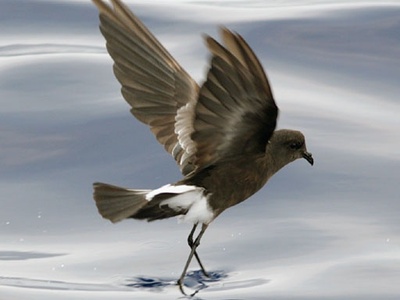
Wilson’s Storm Petrel
A tiny, dark seabird with a prominent white rump. It has a distinctive foraging flight, pattering its feet on the water’s surface as if walking on it. It is one of the most abundant bird species on Earth.
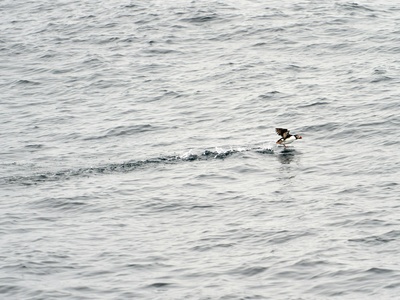
Horned Puffin
Similar to the Atlantic Puffin but with a small, fleshy black “horn” above each eye. Its bill is yellow at the base and red at the tip. It nests in rock crevices or burrows on coastal cliffs.
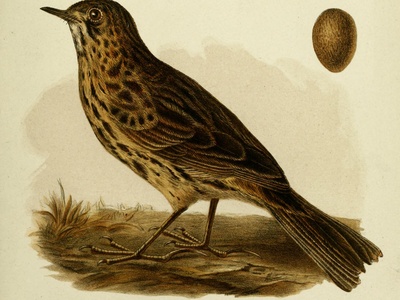
South Georgia Pipit
The only songbird native to the Antarctic region and one of the world’s southernmost passerines. It resembles a small, brown, streaky sparrow and forages for insects and tiny invertebrates along beaches and in tussock grass.
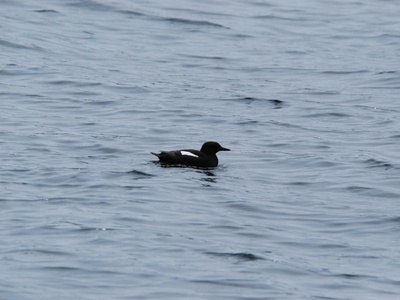
Black Guillemot
A medium-sized auk with striking breeding plumage: all black with large white wing patches and bright red feet. In winter, it becomes mostly white and grey. Unlike other auks, it typically lays two eggs instead of one.
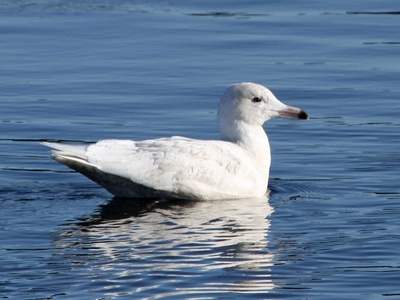
Glaucous Gull
A very large, powerful, and pale gull. It lacks any black in its wingtips, which appear frosty white, giving it a ghostly appearance. It is an apex predator and scavenger in the Arctic, preying on bird chicks and fish.
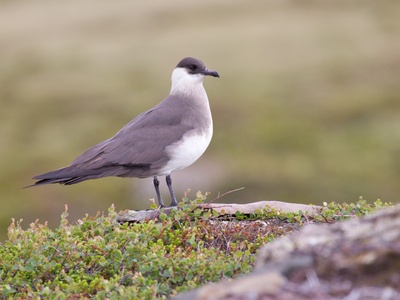
Parasitic Jaeger
A medium-sized jaeger, named for its habit of chasing and harassing other seabirds, like terns and kittiwakes, until they disgorge their catch. It is a swift and agile flier, capable of impressive aerial manoeuvres.
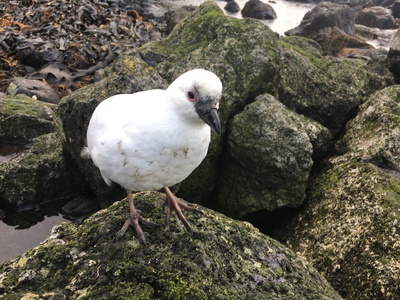
Black-faced Sheathbill
A strange, pigeon-like bird that is the only land bird native to the subantarctic region without webbed feet. It is an opportunistic scavenger, feeding on everything from algae and invertebrates to seal afterbirth and penguin eggs.
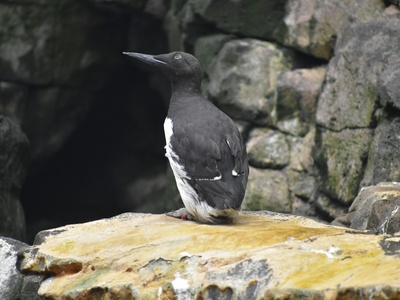
Common Murre
Very similar to the Thick-billed Murre but with a longer, more slender bill. They incubate their single, pear-shaped egg on their feet on a bare rock ledge. The shape of the egg prevents it from rolling off the cliff.
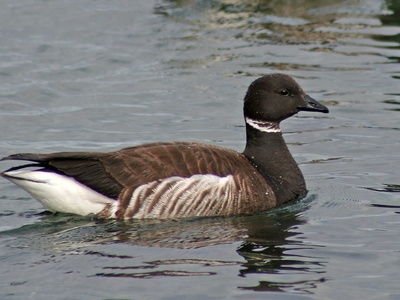
Brant Goose
A small, dark goose with a black head and neck and a small white patch on its throat. It is almost exclusively coastal, feeding on eelgrass and seaweed in saltwater estuaries and bays during winter.
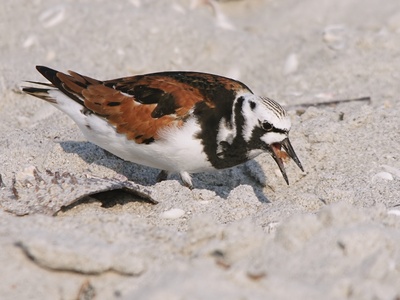
Ruddy Turnstone
A stocky, colourful shorebird with a unique feeding method. It uses its short, slightly upturned bill to flip over stones, shells, and seaweed in search of invertebrates. Its breeding plumage is a striking calico pattern of black, white, and chestnut.
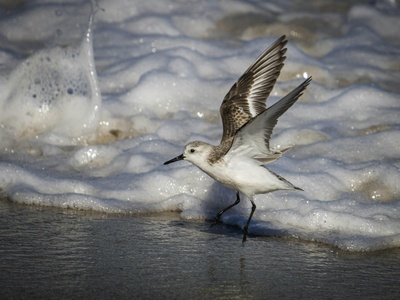
Sanderling
A small, pale sandpiper famous for its energetic behaviour on beaches. It runs back and forth at the edge of the waves, as if chasing them, to pick out small crustaceans from the wet sand. In winter, its plumage is almost pure white.
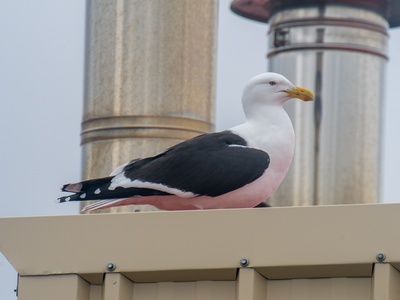
Kelp Gull
The southern equivalent of the gulls of the Northern Hemisphere. A large gull with a white head, dark black back, and a powerful yellow bill with a red spot. It is an adaptable scavenger and predator in coastal ecosystems.
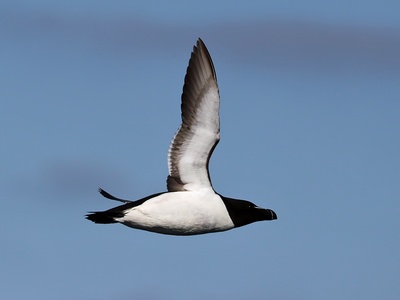
Razorbill
A black-and-white auk with a thick, blunt, black bill that is crossed by a thin white line. It nests on cliff ledges, often alongside murres and puffins. It is the closest living relative of the extinct Great Auk.
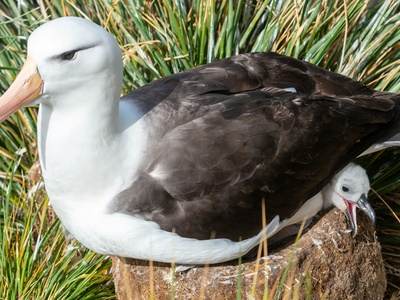
Light-mantled Albatross
An exceptionally graceful and beautiful albatross with a sooty-grey body, a paler “mantle,” and a striking white crescent over its eye. Known for its spectacular synchronized aerial courtship displays performed by mated pairs.
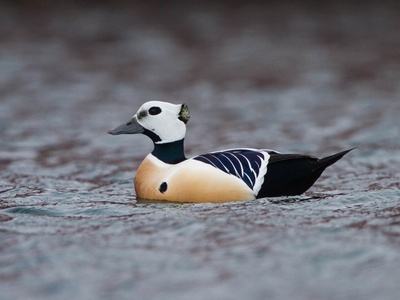
Steller’s Eider
The smallest of the eiders. The breeding male is a stunning combination of white, black, chestnut, and pale green, with unique black tufts on its head. It is a rare and threatened species that winters in shallow coastal waters.
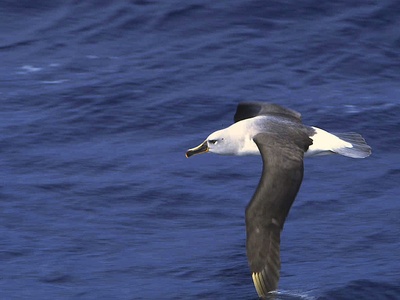
Grey-headed Albatross
A handsome, medium-sized albatross with a neat grey hood, a bright yellow-and-pink bill, and a dark underwing. Like other albatrosses, it is a master of efficient flight, covering vast distances over the Southern Ocean.
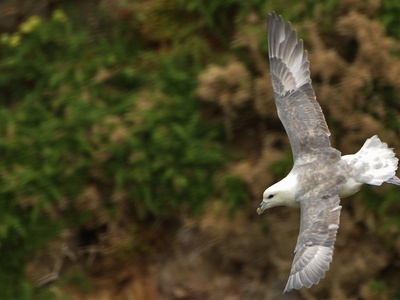
Northern Fulmar
A gull-like seabird related to petrels. It has a stout body and stiff-winged flight. It can spit a foul-smelling, oily stomach substance at predators as a defense mechanism. It comes in both light and dark colour morphs.
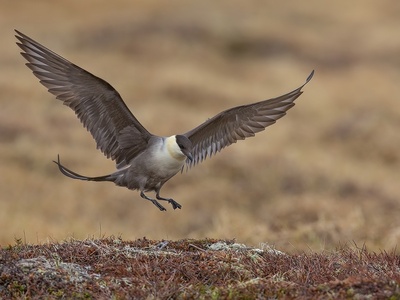
Long-tailed Jaeger
The smallest and most slender of the jaegers, with exceptionally long and elegant central tail streamers in breeding plumage. It is less reliant on piracy than other jaegers, often catching insects and lemmings on the tundra.
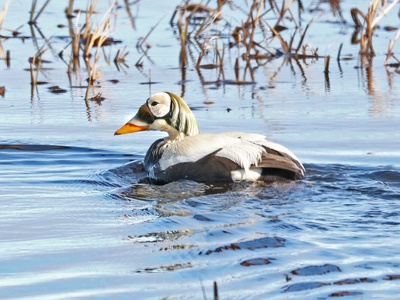
Spectacled Eider
A rare and beautiful sea duck named for the large, velvety, circular “spectacles” of pale feathers around the male’s eyes. These unique markings make it unmistakable. The population has declined significantly, making it a conservation concern.
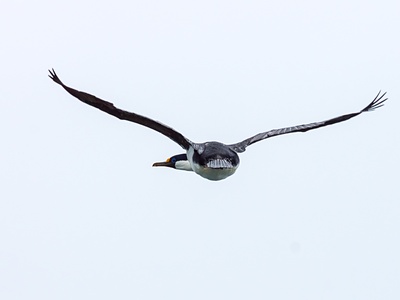
South Georgia Shag
A striking black-and-white cormorant species, part of the “blue-eyed shag” complex. It is distinguished by its orange-yellow caruncles (fleshy growths) above the bill and a prominent crest during the breeding season.
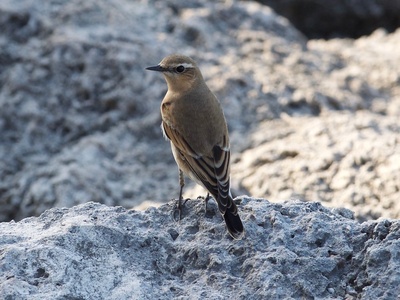
Northern Wheatear
A small, thrush-like songbird that undertakes an incredible migration. Populations from Alaska and Canada cross Asia and the Middle East to winter in Africa. It has a distinctive white rump that flashes as it flits across the tundra.
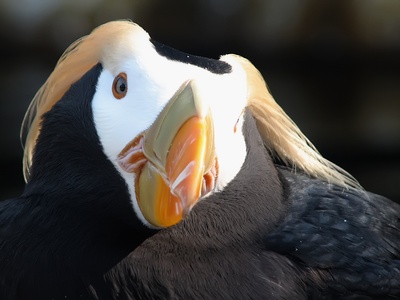
Tufted Puffin
A Pacific relative of the Atlantic Puffin, distinguished by its all-dark body and long, pale-yellow tufts of feathers that curl back from its head during the breeding season. It nests in burrows on offshore islands.
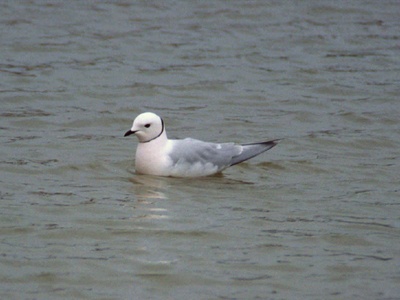
Ross’s Gull
A small, rare, and beautiful gull with a pale grey back, a thin black neck-ring in summer, and a delicate pink flush on its underparts. Its wedge-shaped tail is unique among gulls. It is a legendary bird for Arctic enthusiasts.
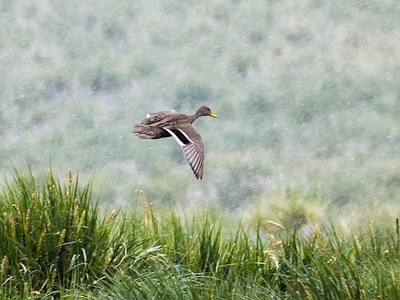
South Georgia Pintail
A subspecies of the yellow-billed pintail, this dabbling duck is one of only two duck species native to the Antarctic region. It is a non-migratory, year-round resident of the island, feeding in freshwater pools and along the coast.
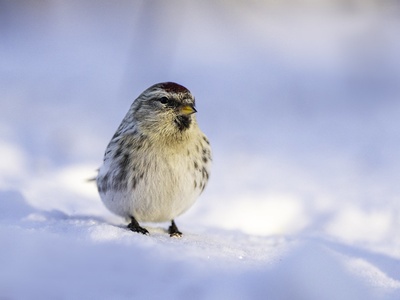
Common Redpoll
A small, streaky finch with a bright red cap, a small black bib, and a pointed yellow bill. They are very social and hardy, often travelling in large, noisy flocks and able to survive extreme winter temperatures.
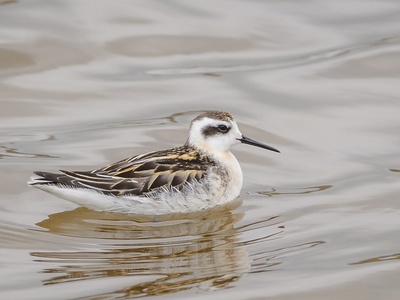
Red-necked Phalarope
Like its relative the Red Phalarope, the female is the more brightly coloured sex, sporting a rich rufous-red neck. They also engage in “spinning” behaviour on the water and the males are responsible for incubation and chick care.
